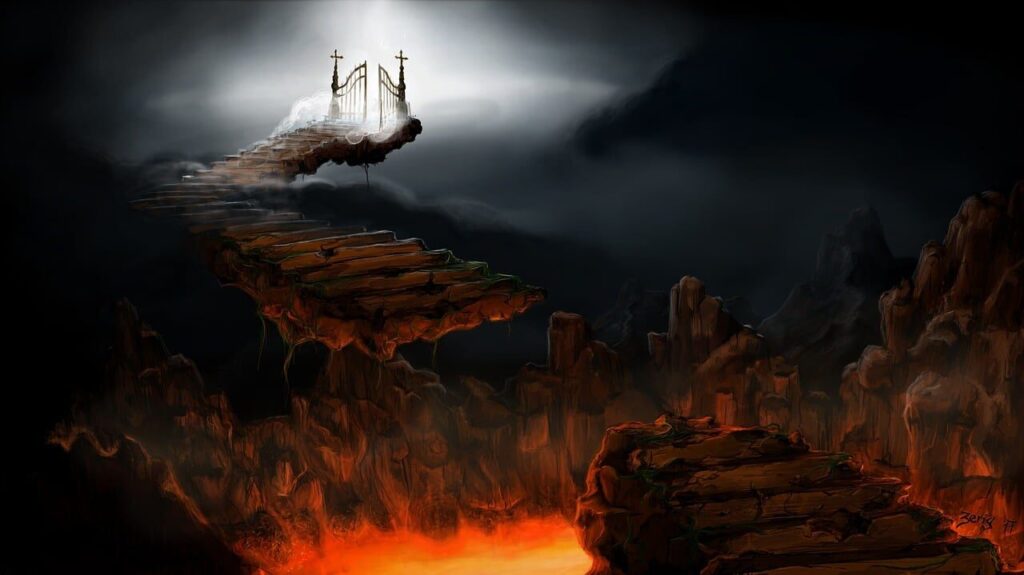For centuries, people have been fascinated and frightened by the idea of the Devil and Hell. From vivid paintings to modern films, these concepts have been brought to life with images of fire, horns, and eternal suffering. But are these depictions accurate, or have they simply evolved through cultural storytelling? Recently, theologian Jared Brock shared a thought-provoking perspective that challenges these traditional portrayals. He suggests that the Devil and Hell, as most people imagine them, are more symbolic than literal, expressions of human fear, morality, and imagination rather than physical realities. Brock’s insights encourage readers to reflect deeply on their beliefs and see beyond centuries of myth to uncover a more grounded and compassionate understanding of good, evil, and the afterlife.
Is the Devil Physical?

Jared Brock argues that the Devil is not a physical being with horns, wings, or red skin but a spiritual presence that represents temptation and deception. The image of a grotesque creature with a pitchfork has no direct biblical basis; instead, it developed through centuries of art and folklore. In religious texts, the Devil appears in many symbolic forms, such as a serpent or an angel of light, suggesting that his true nature is to deceive and manipulate. Brock emphasizes that the Devil’s power lies not in physical strength but in influence, the ability to distort truth, plant doubt, and steer people away from what is good. By understanding the Devil in this way, we begin to see evil not as a monster to be feared but as a subtle force that tests human integrity and faith.
What About Hell? Does It Really Exist and What Is It?

According to Brock, Hell may not be the burning pit of eternal torment often portrayed in popular culture. Instead, he describes it as a spiritual condition, one of separation from God and the goodness that sustains life. Biblical references to Hell use various terms such as Hades, Sheol, and Gehenna, each with distinct meanings tied to death, decay, or moral consequence. This suggests that the idea of Hell has evolved and may be more metaphorical than geographical. Brock also challenges the notion that the Devil rules over Hell, pointing out that in many religious texts, the Devil himself faces judgment. Rather than focusing on fire and suffering, this interpretation invites people to view Hell as a reflection of moral choice, a consequence of rejecting love, truth, and compassion in life.
How These Views Compare with Other Theological Traditions

Different theological traditions have long debated the nature of the Devil and Hell. Some hold firmly to the idea of eternal punishment, while others interpret these as symbolic expressions of divine justice. Historical figures like Karl Barth viewed evil not as an independent power but as a distortion of creation, something that exists only in opposition to goodness. Early Christian art also depicted the Devil as a fallen angel rather than a grotesque creature, focusing on his tragic rebellion rather than his monstrous appearance. Brock’s views echo these older interpretations, emphasizing moral and spiritual lessons instead of literal terror. His approach calls for a more thoughtful engagement with ancient teachings, encouraging believers to move beyond fear-based imagery and toward a deeper understanding of redemption, forgiveness, and divine purpose.
Strengths, Challenges, and Questions to Explore

Brock’s interpretation brings both enlightenment and challenge. On one hand, it frees people from the paralyzing fear of eternal flames, encouraging a relationship with faith built on love and responsibility rather than terror. It also helps reinterpret scripture through a modern lens, focusing on human experience and moral choice. However, questions remain about how to reconcile this symbolic view with traditional passages that describe fire, torment, and judgment. Some believers find these traditional depictions important for maintaining moral seriousness. Brock responds by suggesting humility, acknowledging that divine mysteries cannot be fully explained but can still guide us toward wisdom and compassion. His perspective does not dismiss Hell or the Devil but reframes them as reminders of the consequences of moral failure and the importance of spiritual awareness.
Comments